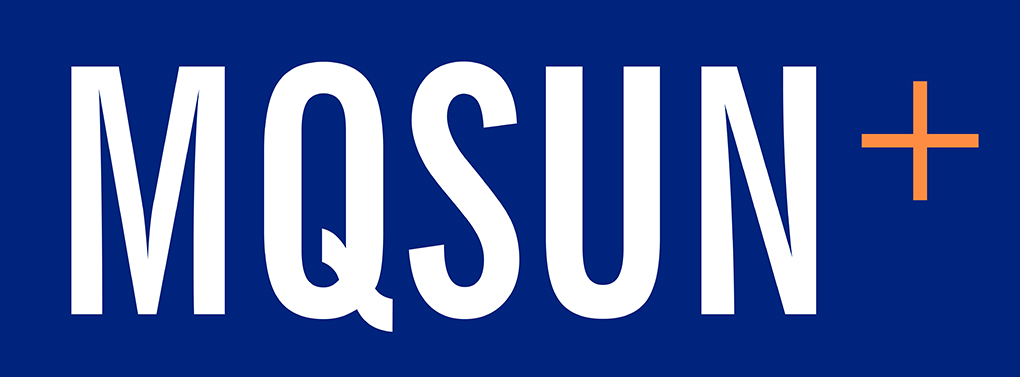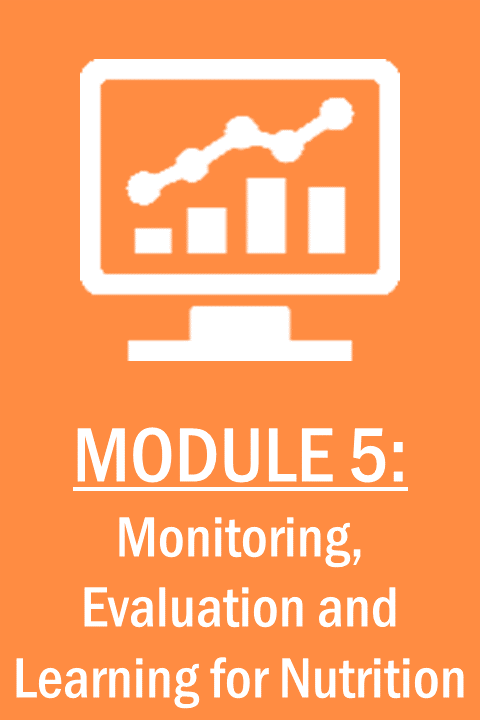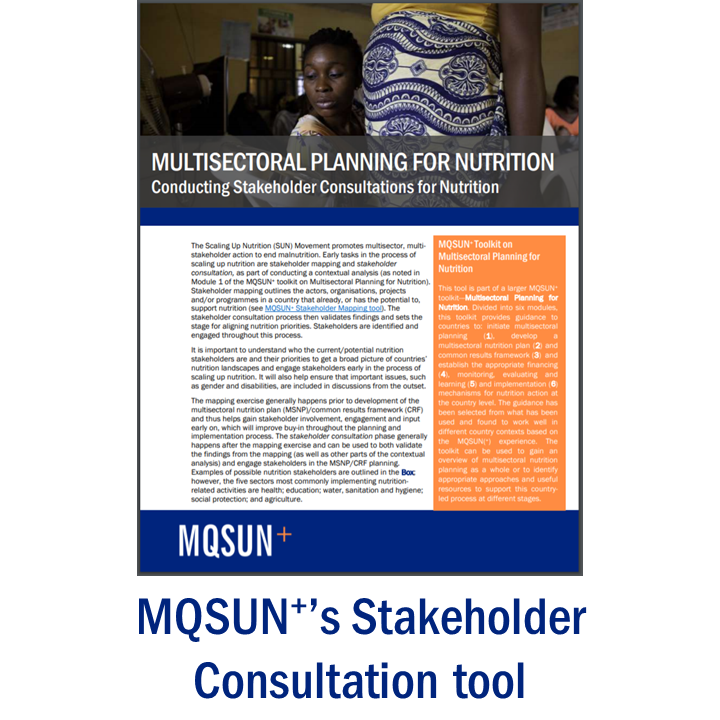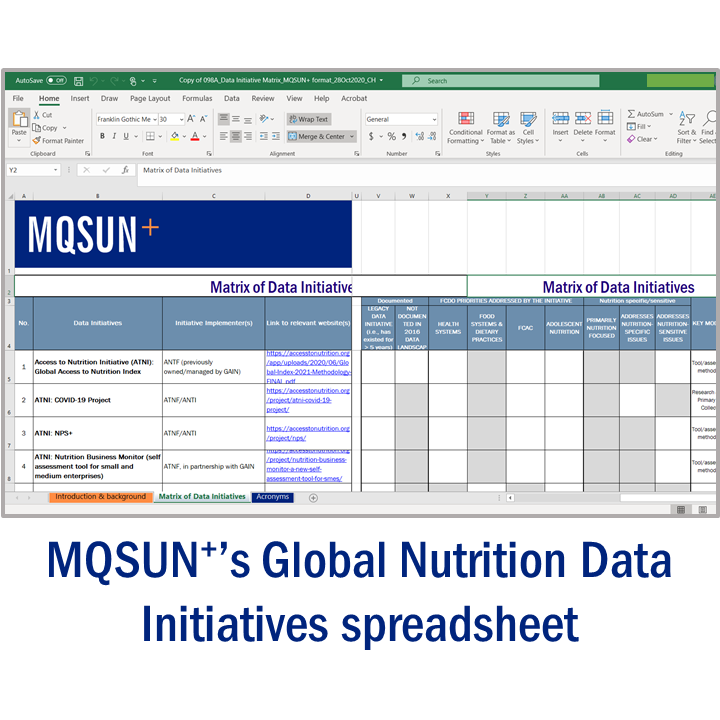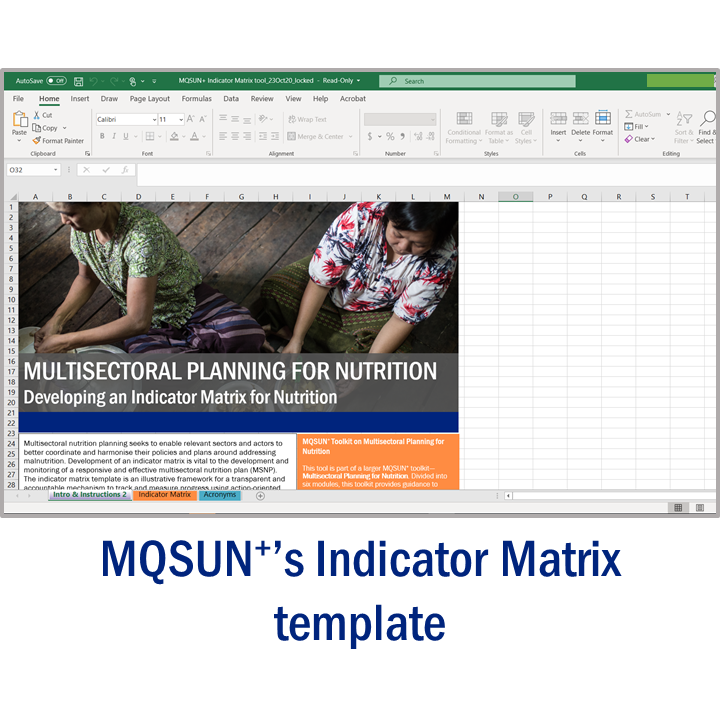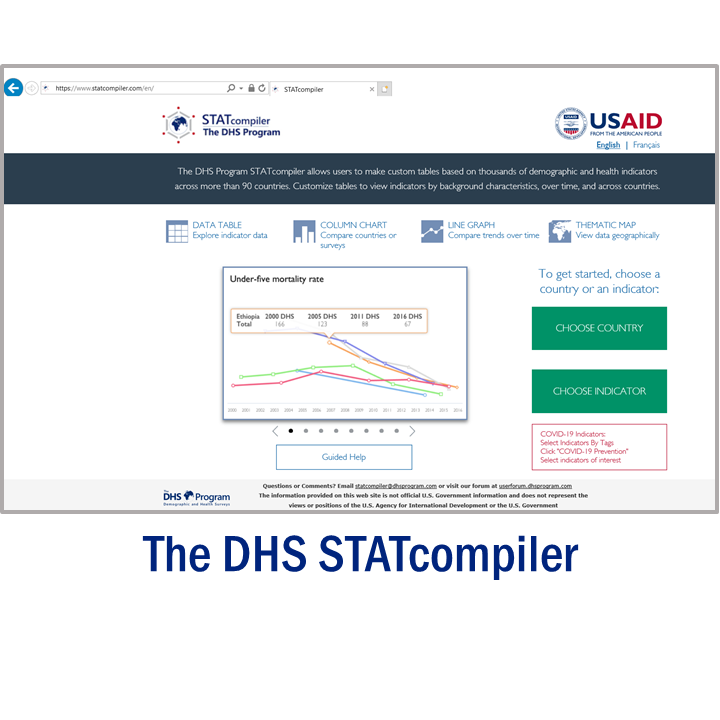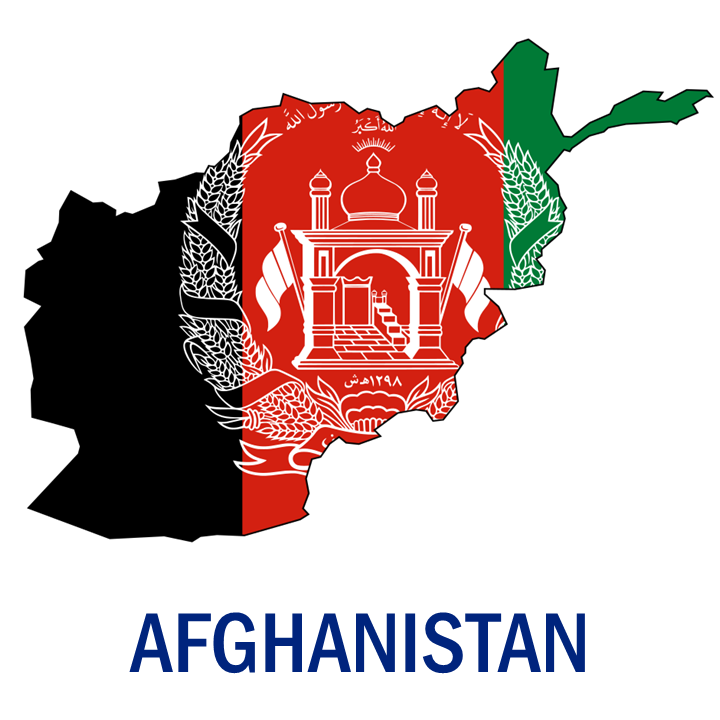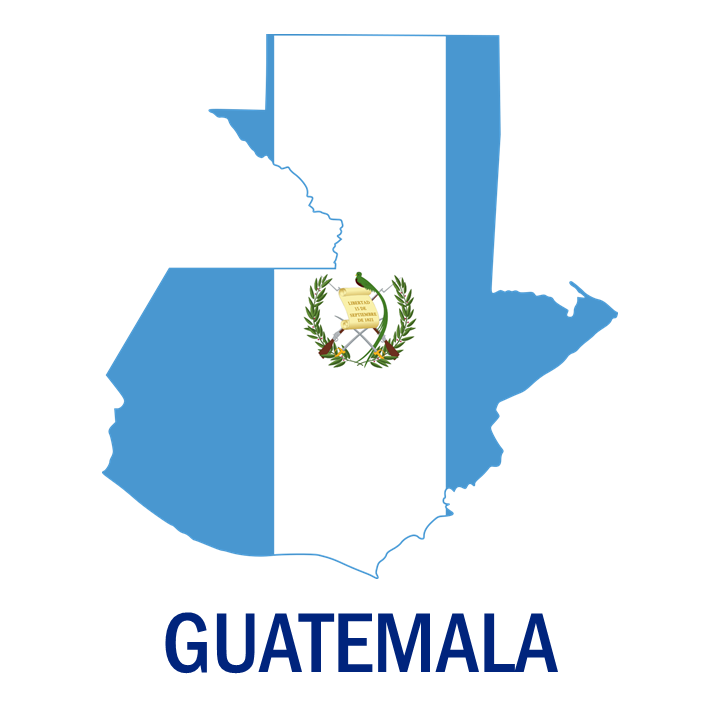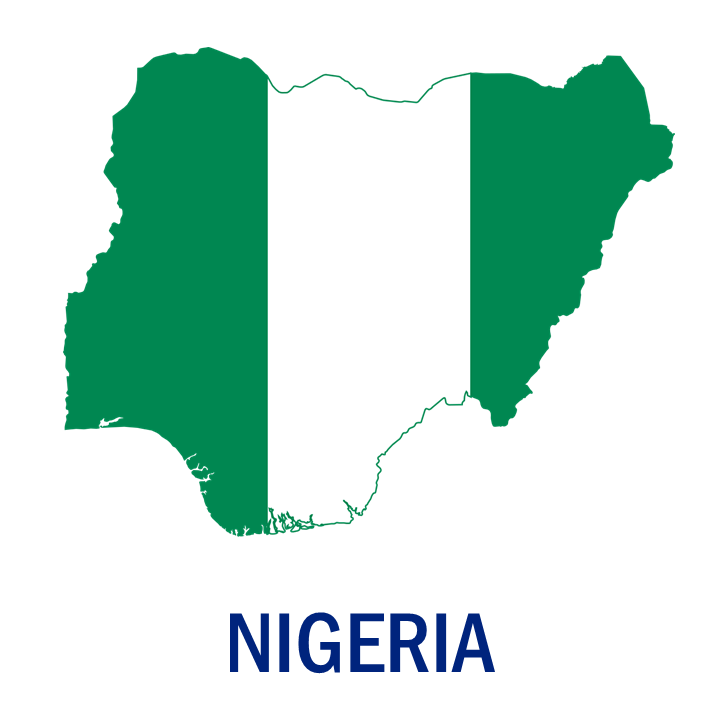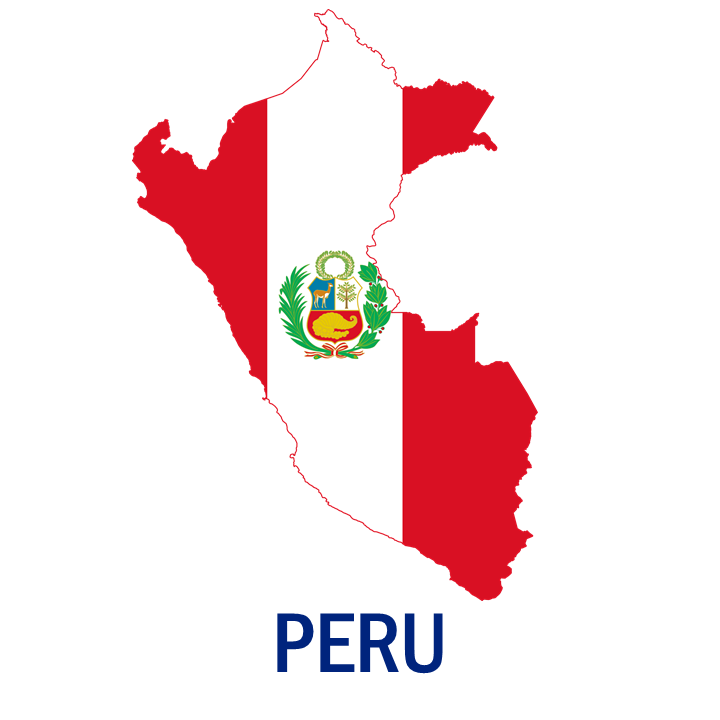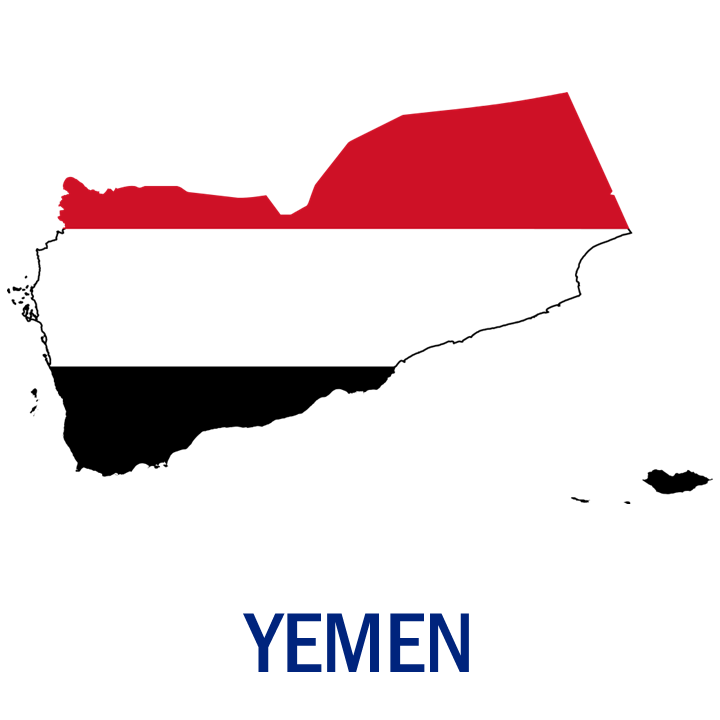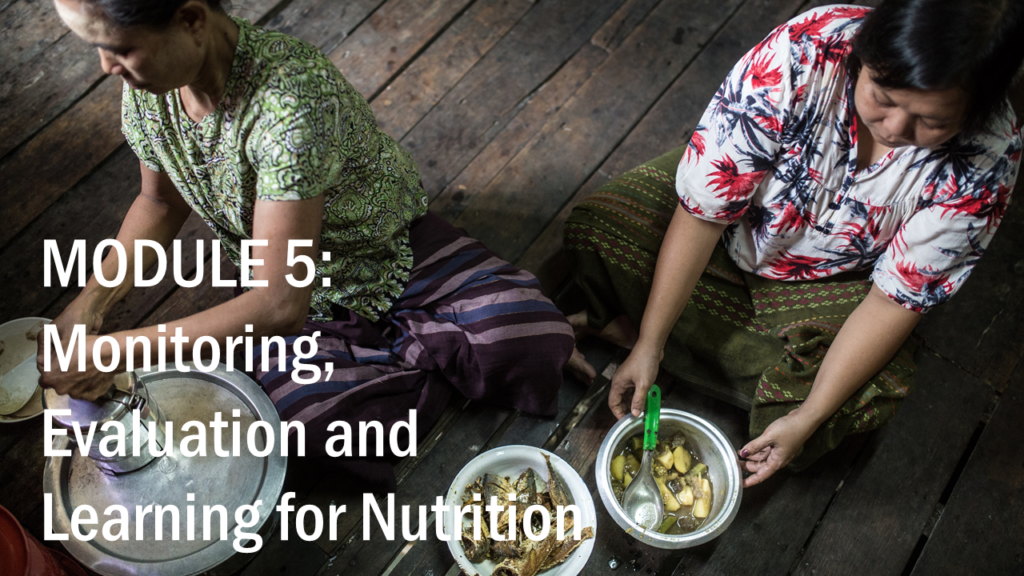
A robust monitoring, evaluation and learning (MEL) system—which builds upon traditional monitoring and evaluation (M&E) to also foster learning and evidence-based decision making—is required to be able to verify whether a multisectoral nutrition plan (MSNP) and/or common results framework (CRF) is on track to achieve its targets. The MEL system should be managed in such a way as to stimulate learning, foster accountability and support evidence-based decision-making. It should support synthesis, use and sharing of information arising from implementation or from evidence from evaluations and research. It should also create transparency and accountability for results. The backbone of an MEL system for nutrition is the MEL framework that defines the architecture of the system.
An MEL framework—which can also be described as a plan, strategy or matrix—is usually developed as a separate document to the MSNP or CRF but is closely aligned with these documents. Dissimilar from the CRF which primarily captures the selected targets and indicators, the MEL framework’s role is to quantify and advance the results in the MSNP/CRF into sufficient detail (granularity) to systematically and progressively monitor and measure change. It is often accompanied by a description of mechanisms to support institutional learning and adaptive implementation and a research and evaluation agenda that identifies priority data gaps that can be filled through sound research and/or evaluations.
Specifically, this MEL framework—a narrative document typically accompanied by an Excel®-based indicator matrix—outlines indicators, processes and tools that serve five key purposes to help stakeholders make informed decisions at various levels regarding plan implementation:
- To help determine whether the MSNP is on track to meet its output, outcome and goal targets and where changes need to be considered and to help make timely decisions to resolve constraints or problems of implementation.
- To support evidence-informed decision-making (e.g. related to resource mobilisation, resource allocation, service quality improvement, capacity building, policy and plan formulation or revision) by the national steering committee or Scaling Up Nutrition (SUN) Movement networks and other stakeholders involved in MSNP/CRF implementation.
- linked to nutrition impact.
- To support advocacy and resource mobilisation with the information generated.
- To support learning across stakeholders.
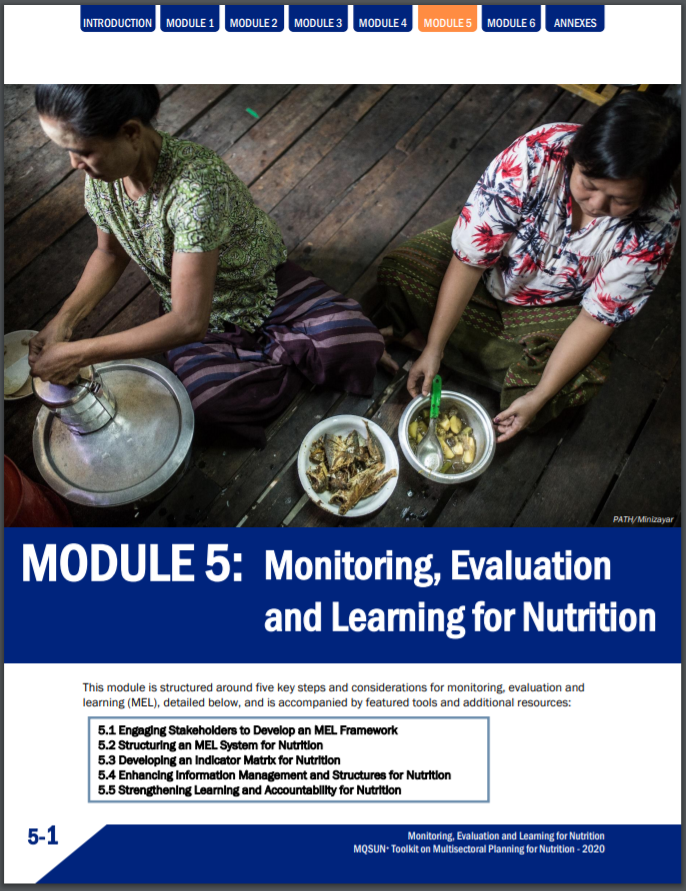 | A key guiding principle in implementing a nutrition MEL system is to build on existing systems and reporting arrangements as far as possible, rather than introducing parallel systems and processes that may be difficult to sustain or too complex given local capacities and resources. |
MODULE 5 OUTLINE
5.1 – Engaging Stakeholders to Develop an MEL Framework (EN, FR, SP)
5.2 – Structuring an MEL System for Nutrition (EN, FR, SP)
5.3 – Developing an Indicator Matrix for Nutrition (EN, FR, SP)
5.4 – Enhancing Information Management and Structures for Nutrition (EN, FR, SP)
_____5.4.1 – Improving Coordination and Information Flow (EN, FR, SP)
_____5.4.2 – Strengthening Information Management (EN, FR, SP)
5.5 – Strengthening Learning and Accountability for Nutrition (EN, FR, SP)
_____5.5.1 – Using Data and Evidence to Facilitate Learning (EN, FR, SP)
_____5.5.2 – Fostering Accountability through Monitoring and Evaluation (EN, FR, SP)
_____5.5.3 – Disseminating Results and Knowledge for Nutrition (EN, FR, SP)

Additional guidance to monitor, evaluate and learn from nutrition
| Resources Food Security Analysis Unit for Somalia (FSAU). Nutrition: A Guide to Data Collection, Analysis, Interpretation and Use. 2nd ed. Nairobi: FSAU; 2005. Available at https://www.unscn.org/web/archives_resources/files/Refman_65_FSAU_FAO_nutrition_a_guid_239.pdf. MEASURE Evaluation. A Trainers Guide to the Fundamentals of M&E for Population, Health and Nutrition Programs. Chapel Hill, NC: MEASURE Evaluation; 2002. Available at https://www.measureevaluation.org/resources/publications/ms-02-05. National Information Platform for Nutrition (NIPN) website. NIPN guidance notes: Managing and analysing data page. Available at http://www.nipn-nutrition-platforms.org/NIPN-Guidance-Notes. Accessed 01 October 2020. SUN Movement. Monitoring & Evaluation Framework. Geneva: SMS; 2013. Available at http://scalingupnutrition.org/wp-content/uploads/2013/05/SUN-ME-Framework.pdf. United Nations Children’s Fund MICS website. MICS6 Tools page. Available in Arabic and other languages at http://mics.unicef.org/tools#analysis. Accessed 02 November 2020. Shekar M, Liddle A. Strengthening Monitoring and Evaluation in the World Bank’s Nutrition Portfolio. Washington, DC: The World Bank; 2003. Available at http://documents1.worldbank.org/curated/en/226601468314071107/pdf/35561.pdf. UN Standing Committee on Nutrition resource website. Nutrition assessment and M&E, general, page. Available at https://www.unscn.org/web/archives_resources/html/theme_000181.html. Accessed 02 November 2020. Tools Food and Agriculture Organization (FAO). Compendium of Indicators for Nutrition-Sensitive Agriculture. Rome: FAO; 2016. Available at http://www.fao.org/3/a-i6275e.pdf. The Food and Nutrition Technical Assistance (FANTA) website. Tools page. Available at https://www.fantaproject.org/tools. Accessed 02 November 2020. UN Statistics Wiki website. E-Handbook on Sustainable Development Goals Indicators page. Updated 25 Aug. 2020. Available at https://unstats.un.org/wiki/display/SDGeHandbook/Home. |
